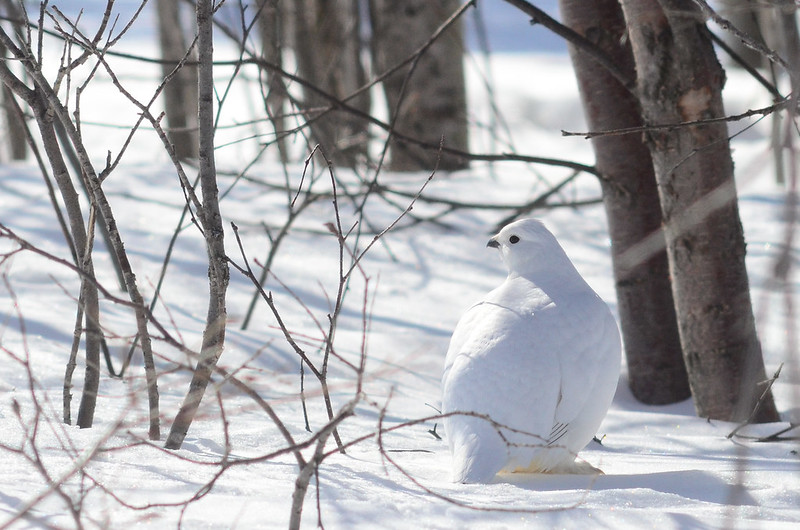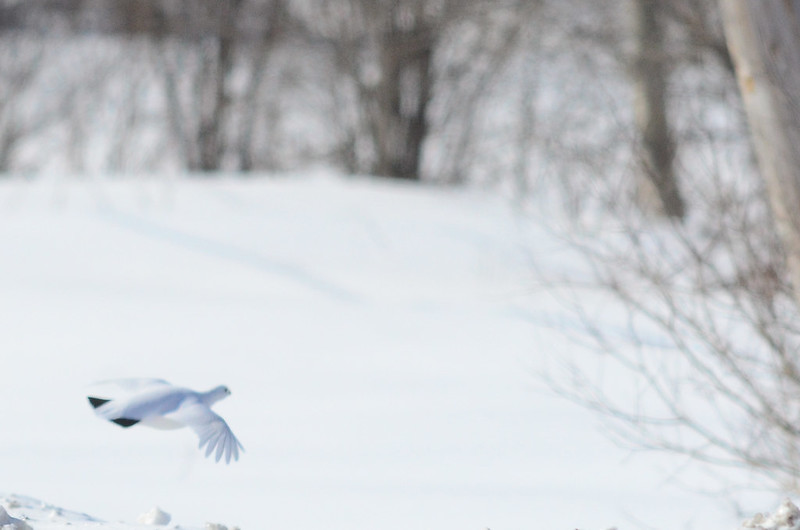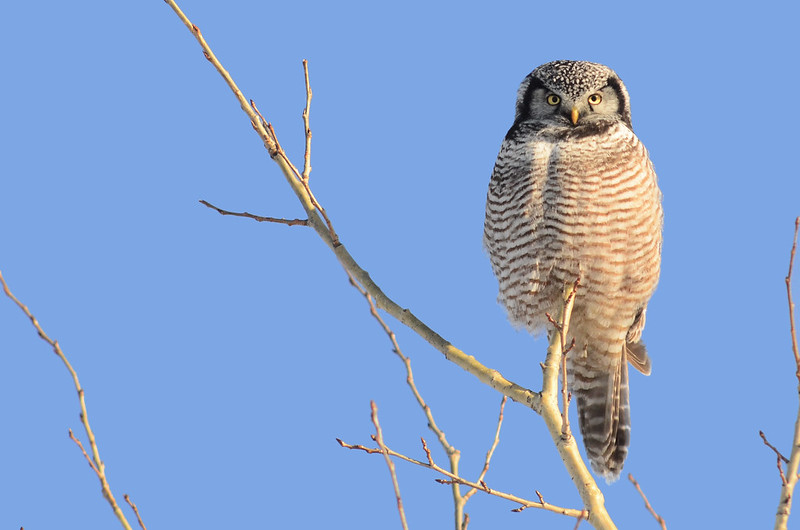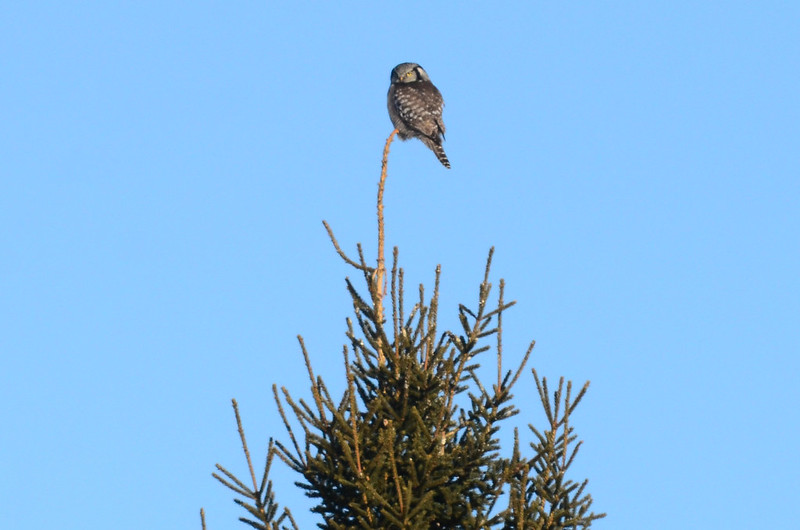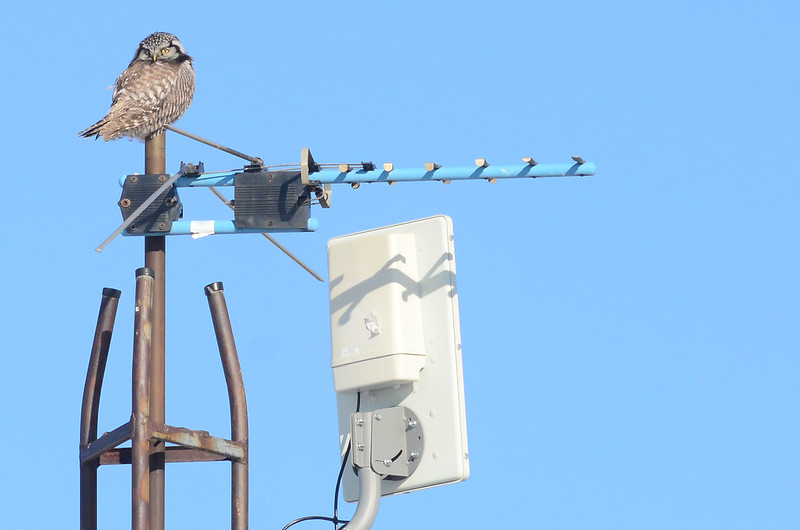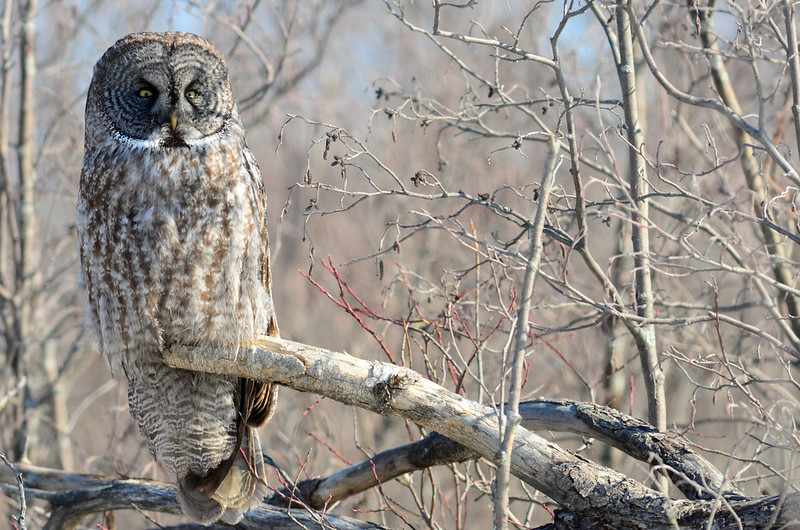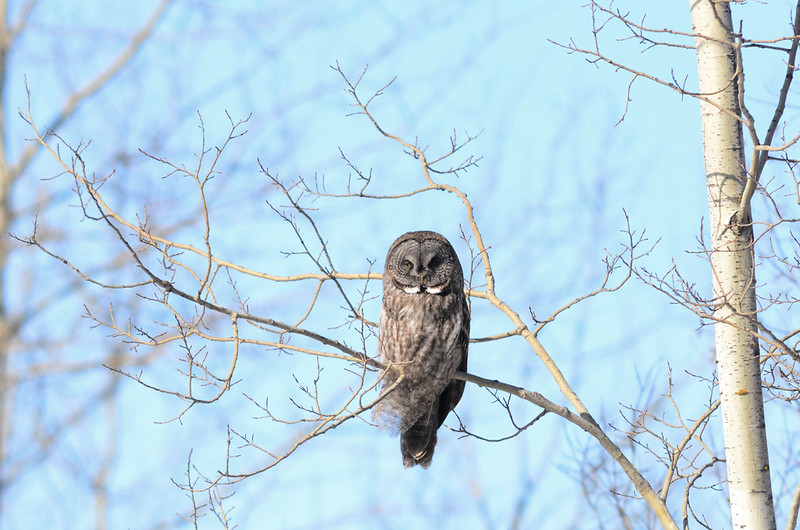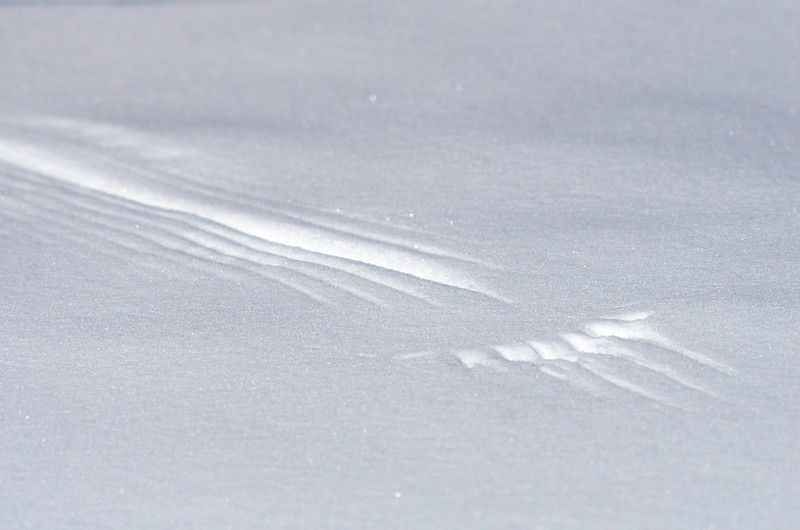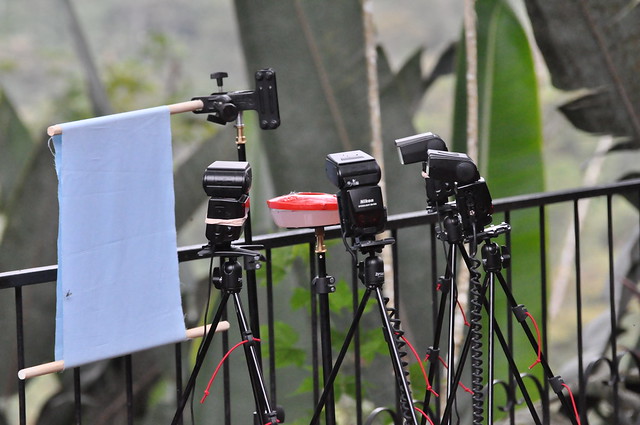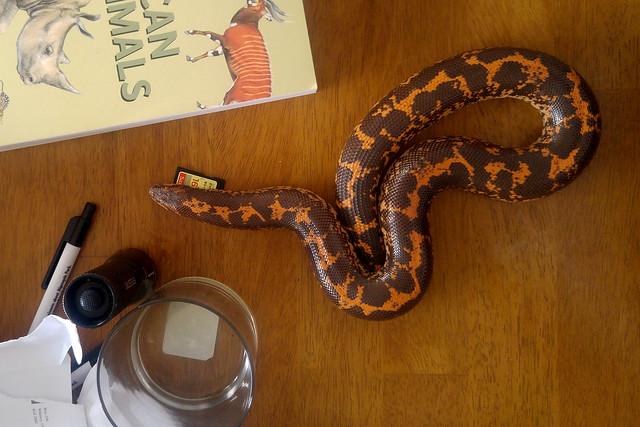Feeding birds has always been a hotly-debated issue. In Ontario, especially during winter, we have a large variety of birds that are responsive to being fed and this generates a lot of attention at this time of year. I have always had a strong opinion on the various practices of feeding birds, and over the course of several weeks have been adding to this blog post, which has been a long time coming.
I have tried my best to share my opinion on feeding birds. While not much research has been done on the effects of feeding various birds, I have tried to include references where I could, as well as my own anecdotal observations over about a decades worth of intensive birding and photography effort on my part. Hopefully, reader, the following bit of opinion and fact can help you make your own decision on this often controversial practice.
The first thing I’d like to explore is this simple question:
why do people feed birds?
I can think of three main reasons.
- Achieve a connection with nature close to home.
- Achieve the impression of providing help to
those who need it.
- Obtain photographs or better views of birds.
The first one, from my experience, is the most common and
obvious. Having a bird feeder in the backyard allows the beginning naturalist
to study and observe different species of birds at close range. It allows the
observation of basic behavior and adaptation – different birds eating different
foods, social interactions at the feeder etc. Many folks I have spoken to had a
bird feeder during childhood and it helped them develop a passion for nature
that they continue through this day. Especially during the slow days of winter,
watching birds coming to the feeder, identifying them and recording their numbers
gives great pleasure to millions of people, including myself. I firmly believe
that bird feeders are a great tool for fueling the love for nature, especially
for kids – and nature could use some love.
Another reason a lot of folks would give for feeding birds
is that it appears to help birds survive hard times. This is easy to see
especially when there is inclement weather and birds gather in droves at the
feeder. In really bad weather, a bird feeder could mean the difference between
life and death for individual birds, and knowing that you may be saving a life
is a good feeling that a lot of people desire.
There is one fact that cannot be ignored, however – birds do
not require supplemental food from humans in order to survive.
In areas without bird feeders, “feeder” birds still persist. The density of
these species is lower outside of feeder-rich areas – especially resident
species such as chickadees.
It is hard
for us to imagine an animal starving to death – but starvation is a natural
control agent. Removing the possibility of starvation impacts the local
ecosystem. This is especially true of areas where waterfowl are fed in the
winter. It is not difficult to understand that a congregation of hundreds of
ducks, geese and swans would not concentrate naturally in one small area.
Studies have shown degraded water quality, increased bacteria in
such areas
(Fleming and Fraser, 2001).
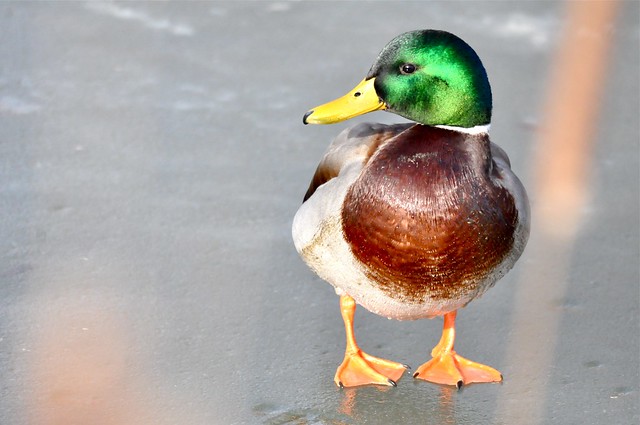
Many areas where people feed ducks, geese and swans suffer from poor water quality and sometimes the birds develop nutritional deficiencies from a poor diet. A huge concentration of waterfowl close to humans also likely exposes them to greater risks from urban predators such as coyotes, and ingesting or getting caught in foreign material.
It is actually a fact that
having a bird feeder kills birds. There are a variety of statistics
that indicate that
free-roaming cats and windows are well-known bird killers.
Having a bird feeder exposes birds to both of these threats. While the big
statistics having to do with windows are likely large office buildings, most of
us with bird feeders have seen a window strike or two that could have been
prevented if there wasn’t a bird feeder. Cats prowl in many urban and suburban
areas and are effective predators on birds – and concentrated birds at a feeder
make an easy target. Birds of prey also frequently visit bird feeders, and one
study showed that backyards with feeders had a much more likely chance of
having birds eaten by hawks than backyards without bird feeders. This is a
no-brainer – but the study does exist
(Dunn and Tessaglia 1993) It was done to look at predation of birds at feeders – and the study concluded that
the predation likely does little to no harm to bird populations.
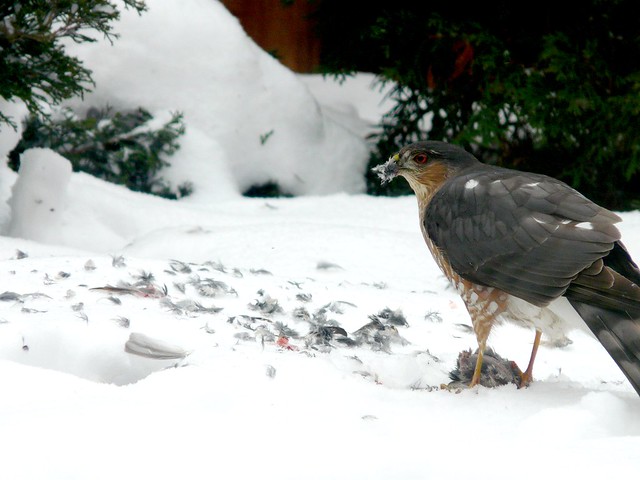
I was responsible for the death of this House Sparrow by attracting it to my feeder, which was hunted by a Sharp-shinned Hawk. If it were not for the feeder, the sparrow would have still been alive - but on the other hand, the hawk may not.
Many diseases, such as salmonella and avian conjunctivitis, are transmitted by
bird feeders and local epidemics can happen due to feeders that may kill hundreds of birds
(Thomas, Hunter, Atkinson 2007, Infectious Diseases of Wild Birds). If one does not clean their feeder regularly, it can do real damage.
Having a properly placed bird feeder that is
often cleaned does little to no harm to bird populations. It does likely impact the local
ecosystem by saturating it with “micro” predators - because all those
chickadees, nuthatches, woodpeckers and the like feed on arthropods when they’re
not coming to the feeder.
That is something that still needs to be studied.
That being said – if what one values are the lives of
individual birds, then having a bird feeder is not the way to go. You will
definitely be responsible for the deaths of many more birds if you have a bird
feeder than if you do not. I would say that most people believe that the
pleasure of being able to interact with feeder birds is worth losing the
occasional one to a hawk or a cat.
The conclusion I have come to is that most people have bird
feeders with good intentions – to interact with birds at close range, or to
achieve the feeling that they are helping out beings in need. Regardless of the
intention, the fact remains – birds do
not need feeders to survive, and humans have bird feeders solely to satisfy human desires.
The third reason why people feed birds is again for a very
obvious human benefit - obtaining views or photographs. This is where owl
baiting fits in most clearly. Having a mouse dispenser in a yard to
enjoy flocks of owls would be unrealistic and expensive, so I don’t think that
is ever the case. Some folks may feed owls because they perceive them to be
starving – the same fact above applies – they do not require supplemental food
from humans even if they are starving, which is often not the case at least for Snowy Owls. Most folks
I encounter are baiting owls for one purpose – to photograph them.
Other raptors, hummingbirds and songbirds are all potential
photography subjects that respond to baiting. Birds like gulls and rare small-and-brown
feeder vagrants don’t gather the same crowds as an owl, but are often baited by
people who desire better looks or photos.
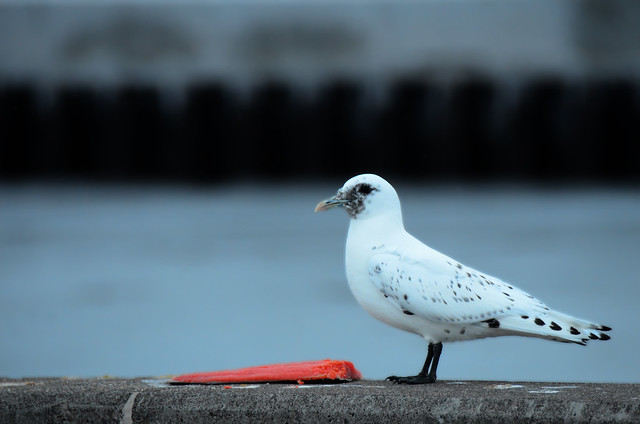
We baited this Ivory Gull using a steelhead fillet to get better looks and pictures. It was unconcerned by the presence of people because it has likely never seen one before. A variety of other gulls were present and accustomed to people because it was a busy park.
The negative impacts of feeding these birds are not much
different than feeding birds in the yard – they are attracted to potential
threats (roads, predators), and it likely impacts the local ecosystem by
congregating them in a smaller area. Rodents purchased from pet stores are
produced for the purpose of feeding often very expensive reptiles, and are
unlikely to be harboring diseases, as that would be very bad for business - not to mention a very real workplace hazard. There
may be a slight risk from disease, but likely not as high as getting a disease
at a feeder, or hunting rodents near human habitation, which may have been
poisoned and
has resulted in the deaths of owls before.
A strong argument against feeding birds is the fact that
feeding owls and other birds habituates them to humans, which brings another
question:
What are the costs of habituating birds
to people?
Habituation is defined as “
a form of learning in which an organism
decreases or ceases to respond to a stimulus after repeated presentations.”
This means that a bird that sees and
interacts with people on a regular basis, such as when being fed, it loses its
fear of humans.
Birds of all descriptions readily
become human-habituated. Gray Jays in Algonquin Provincial Park are an
excellent example of human-habituated birds – they will land on people’s hands
and heads in order to get a snack. Anyone who enters the Spruce Bog trail in
winter, regardless whether or not they are carrying birdseed, gets “attacked”
by chickadees and nuthatches. Bold gulls
in popular beachfront areas will steal human snacks while the owners are not
looking. Owls that have been fed extensively will follow cars, “begging” for
handouts in a similar manner. Bald Eagles at dumps. Pigeons in downtown. There
are many examples.
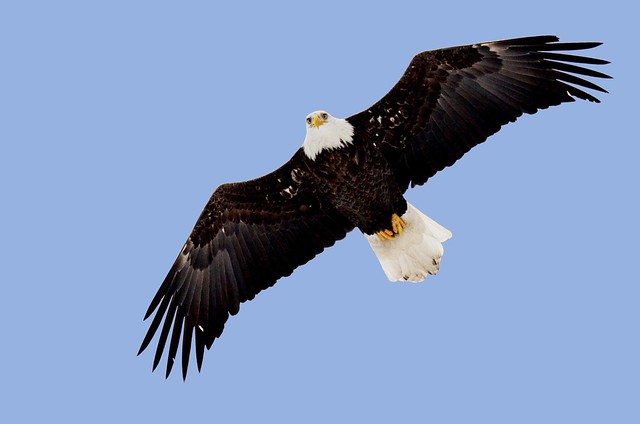
This Bald Eagle was one of several birds eating garbage at a landfill in North Bay. It recognized that people brought food and would approach people and machinery.
It may be bizarre to see a Great Gray Owl
acting somewhat a Gray Jay. The main difference is that Gray Jays and
chickadees are able to utilize a wider diversity of food than owls, but they
are still predators on insects and other small animals. All birds, especially
during winter, are mainly driven by food.
Most owls that are easily fed by humans – Snowy, Great Gray, Barred and
Northern Hawk Owls, are all irruptive migrants to some extent, that move south
from their northern breeding grounds – for the latter three, it has been show largely
due to food shortage (Nero 1980
,
Mikkola 1983
,
Duncan 1992). They will all hunt during the day to some extent as well,
which makes it easier for photographers to feed them and obtain pictures.
A couple of things are important to realize – all birds are
driven by food in the winter, and food for birds – especially owls – is often few
and far between. A Great Gray Owl may travel a long distance without
encountering any food – and indeed, they seem to be capable of withstanding
starvation for prolonged periods (
Voous 1988b). Radio-tracking shows individuals can travel (day and night) up to 40 km in 24 hours! The nature of a common prey base for northern
owls – voles and lemmings – indicates that they may be locally abundant in one
area while in another they may be absent. That could mean that one field may be
overrun with voles while in the surrounding area they may be rare or absent.
A few weeks ago, Amanda and I observed no owls in several acres of farm fields
in northern Québec, but one field held a Northern Hawk Owl and two (later
three) Great Gray Owls. We watched a Great Gray Owl capture meadow voles 1 out
of 3 times it dove – clearly there was a lot of food in this small area. In
2013, small mammal numbers in Algonquin Park were very high
(Wildlife Research Station Report 2014). Great Gray Owls staged
an irruption that winter, and a couple of birds were seen in Algonquin for many
weeks. This year, Great Gray Owls are also staging an irruption, but the small
mammal numbers in Algonquin seem to be poor, and no owls are sticking around. Snowy
Owls are capable hunters and have a much broader selection of prey including
other mammals and birds, and a look at
Project SNOWstorm reveals that they
travel a surprising amount even when wintering.
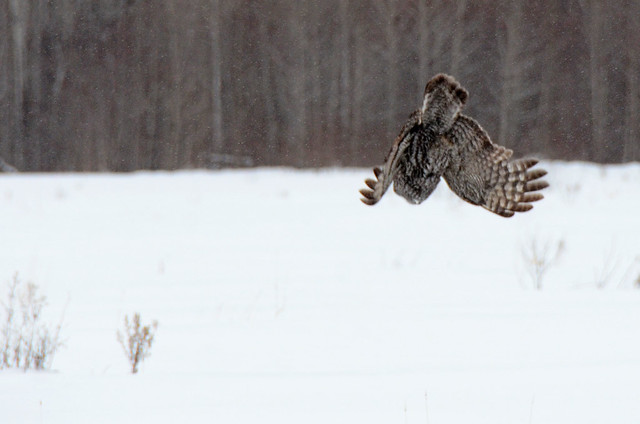
Amanda and I watched this owl capture several voles in quick succession. It was hunting a field with another two Great Gray Owls and a Northern Hawk Owl - all of which were attracted here apparently due to a local rodent outbreak.
Birds, including northern owls, are adapted to fluctuating
amounts of food. Baited owls are unlikely to starve if people suddenly
stopped baiting them, as it would be similar to exhausting a natural food source
and then moving along to find a new one. Northern owls, even heavily baited ones, return northwards on
the arrival of spring – just like hummingbirds move on from hummingbird feeders
on the onset of fall. It is widely believed now that bird feeders don’t prevent
birds from migrating though they may alter their migratory routes. Many people take down their feeders in spring. It is important to remember that prior to European colonization, there were no farm fields in Ontario for Snowy Owls to hunt in during winter, so they had to move further during irruption years, likely towards the coast, and probably suffered greater losses due to starvation.
I think it is safe to assume that owls or other
birds aren’t at risk of losing their ability to hunt or migrate due to baiting due to their abilities to adapt to widely fluctuating food sources. The obvious still remains – baited owls show less fear of humans than
non-baited owls.
This is best addressed owl-by-owl. The three owl species
most subjected to baiting (from my anecdotal observations) are the Snowy, Great
Gray and Northern Hawk Owls.
Great Gray and hawk owls, even birds that have never seen a
white mouse before, are by default generally very tame around people (though this
is dependent on individual birds as well). I have been around birds of both
species that permitted a very close approach to within a couple of feet that
did not exhibit any signs of stress, and I was in remote northern areas where
baiting had not taken place. Feeding these birds causes them to be even bolder. I have been approached very closely by baited Hawk Owls expecting food. I
have less experience with baited Great Gray Owls, but numerous photos and
videos of birds sitting on tripods and taking food from the hand make it
apparent that they respond very well to being fed. For these species, there was not much of a
fear of humans to begin with – similar to how Gray Jays often sit on people’s
heads and come to the hand readily wherever they are fed, but Blue Jays even in
the most populated areas very rarely exhibit any of this behavior.
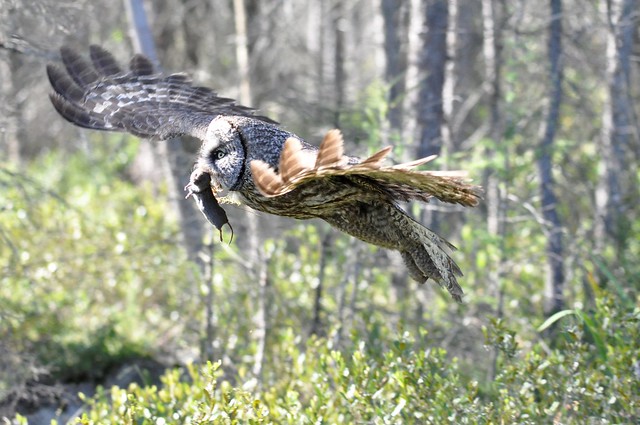
I approached this Great Gray Owl slowly while watching for signs of stress. It was breeding in a bog far away from humans and was not subjected to baiting. I approached until the bird was about two feet from my face. It flushed, but it had actually dove to capture a small mammal I had disturbed from beneath my feet, and landed with its left wing almost grazing my shoe. I felt the displaced air from its wings as it came back up and resumed hunting within a few feet of me. It did not seem to recognize me as anything but scenery.
Snowy Owls are quite different. From my experience, Snowies
that have not been fed often flush at the approach of a human from a long
distance away. Even when approached with cars, they are not comfortable unless
they are at a decent height. Birds coming in to bait grab the mouse and fly off
into the field to eat it. Only after birds that have been heavily fed will they
permit a close approach, and even then will often eat their prey further away
from the people feeding them. These are birds of open tundra and land-based, mammalian
predators are an important feature in their habitats
(Holt, Denver W., Matt D. Larson, Norman Smith, Dave L. Evans and David F. Parmalee 2015 ) – which is perhaps
why they are more timid of people than the boreal forest-dwelling species
above. They are also hunted in certain parts of their range (moreso historically than currently).
I have never seen or heard of a Snowy Owl taking food from the hand,
perching on a tripod, or being stroked by a person. Snowy Owls will come to
cars and groups of people and “beg” for food – but usually only at a perceived safe
distance or height.
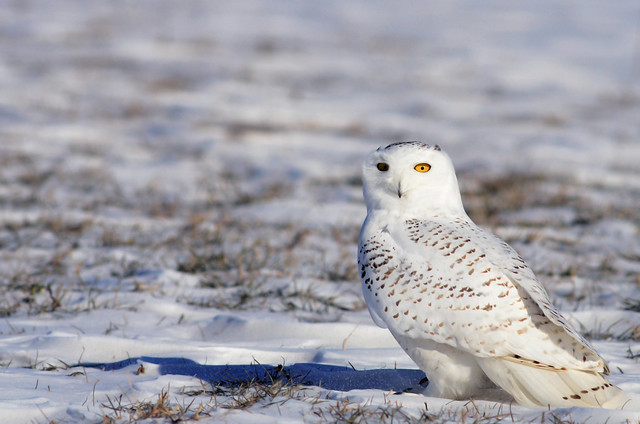
This Snowy Owl was from an area where Snowy Owls were frequently fed. It had approached parked vehicles and landed on a post directly adjacent to but well above a vehicle, vocalizing - clearly anticipating food in a strikingly similar manner to a Gray Jay. It was given a mouse, which it grabbed in flight from a close distance to the photographers and then flew well back into the field to swallow it. It then returned to the same post.
Owls, especially Barred and Great Horned Owls, can sometimes be very aggressive around the nest. Many accounts of owls "attacking" people or pets are due to such threats being close to the nest, not because they expect to be fed (
Rohner 1997).. Great Horned Owls are active almost exclusively at night and so are undesirable targets for baiting.
A variety of other birds also come directly to humans for
food, including passerines like chickadees and the like, Wild Turkeys, and a
variety of gulls. Many of these species will not normally approach people for
food as “wild” birds but lose their fear of people completely and up to the
point of taking food directly from the hand.
Unlike the northern owls, some of these birds are year-round residents
of wherever they are fed, so their habituation and all of the negative effects
associated with it occur for 365 days a year and impact not only them, but
their offspring as well. Some, like Wild Turkeys, are game birds and
habituating them to people in areas where there is hunting pressure makes for a
very easy hunt. Others, such as Blue Jays and grackles, are nest predators and
concentrating them in one area for a period of time extending into the nesting
season may negatively impact the breeding birds in that area.
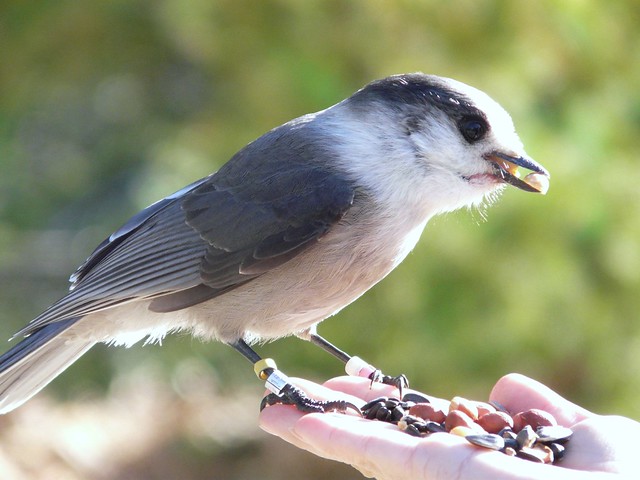
Gray Jays and Blue Jays are similarly-sized birds with a similar diet, which includes live animals such as other birds and small mammals. Both would likely take live mice from people if offered, but most usually offer them seeds and nuts as they will readily eat those. Gray Jays are much more confiding and Blue Jays rarely come to the hand even in areas with lots of people feeding them. Both will approach people expecting food.
Most people will agree that feeding a Gray Jay or chickadee
is not the same as feeding an owl – but there are some similarities. In various
areas in Algonquin Park, chickadees and Gray Jays seek humans for food, and
often fly across busy Highway 60 to access them – rendering them vulnerable to
collisions - a major argument against owl baiting. There is data that suggests road mortality negatively
impacts bird populations – and there is a lot of data that suggests individual
owls are vulnerable to this plight
(Bishop & Morgan, 2013) They are low and slow-flying birds. Having
near-misses and collisions with birds in the past, I can say it is
easier to take evasive action when I see an owl-sized bird crossing the road
vs. a chickadee - at least during the day. Most owls are hit at night, when they would not be subject to
baiting and are more difficult to see. I think it is fair to say that drawing any bird to the road – be it
owl, chickadee, turkey etc. places it in higher risk of vehicle
collision. Owls are likely drawn to roads naturally, because they mimic edge habitat, attract rodents and provide elevated perches in the form of power poles - though irresponsible baiting during the day can likely increase their risk of collision as well. About 40% of the owls that an Ontario rehabilitation center specializing in owls admits are due to road collisions (The Owl Foundation, Jeff Jones pers. comm. 2017).
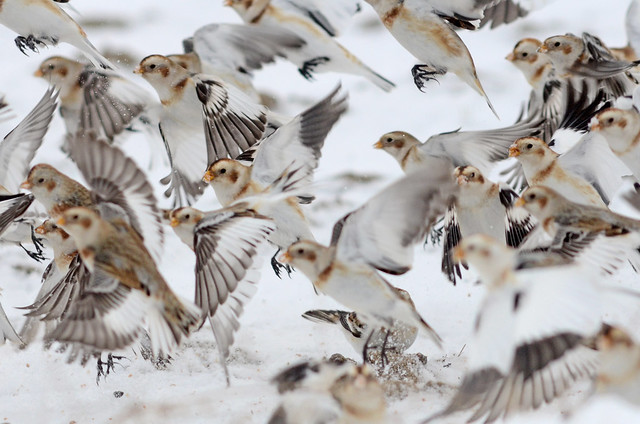
This flock of Snow Bunting was baited to the side of a relatively busy road by people putting down corn. It allowed close views and photographs of the buntings, but I witnessed several near-misses due to speeding cars not noticing the small birds. It is difficult to know how many small birds die due to road mortality because they are often crushed beyond recognition or picked up by scavengers (Bishop & Morgan, 2013)
Folks will often say that feeding chickadees and other birds
from the hand is an education opportunity, but I believe the educational value
is minimal, save for getting a close look at the bird. Normally, birds would
not approach humans, or eat non-naturally occurring food items like peanuts and
sunflower seeds – so there is not much ecological integrity in the practice.
So far, the answer to “Is
human habituation good, bad, or neutral?” has been mostly negative. Is
there a positive to birds being human-habituated? I think so.
Hand-feeding chickadees has brought joy to many adults and
children alike, and has undoubtedly sparked interest in the natural world for
many young naturalists. It may not be educational, and may cause behavioral
changes in the animals involved, but if a few kids who have hand-fed chickadees
become conservation-minded voters, or – even better – go on to work in the
field of conservation, then that is a major victory.
I have yet to see a family feeding an owl – it is a bit more
macabre (though this may be a good “circle-of-life” talk opportunity), so are
there any benefits that owls have specifically? I also think the answer is yes.
Where in Ontario do you go to photograph a Barred Owl? If
you answered “Whitby”, then you are correct. Most bird photographers have
visited this celebrity bird, and some have undoubtedly fed it. Regardless of
your opinion of this local “celebrity” – in every photograph I see of it, it
looks like it could not care less about its adoring crowds. If the masses of
photographers who visit this bird went on to find their own Barred Owls to get
similar photos, it would result in a lot of stressed out Barred Owls.
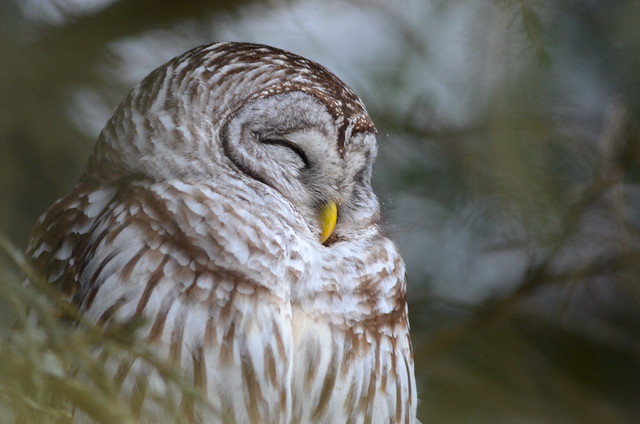
Barred Owls are usually fairly tolerant of people, but do not often permit a very close approach or loud noises. This is the Whitby Barred Owl reacting to a gang of loud children, a half-dozen loudly talking photographers and birders and two Rottweilers directly below its perch. Many folks saw a Barred Owl and it was not a negative experience for the owl.
Snowy Owls west of Barrie are a similar story. There are
lots of owls and more photographers and birders that go and see them. They are
fed extensively for the duration of their stay, which makes them less wary of
the groups of people coming to see them. Many people who object aggressively to
baiting the owls are more than happy to photograph the habituated birds from a
short distance away – which is only possible because the birds had been baited
beforehand. Trying to photograph Snowy Owls that have not been habituated is
difficult because the birds are wary by nature. Often, birds are flushed
frequently and trespassing may occur in an attempt to get better views and
photos of these wary birds – both actions that are detrimental to the bird and
the image of birders and photographers to the public.
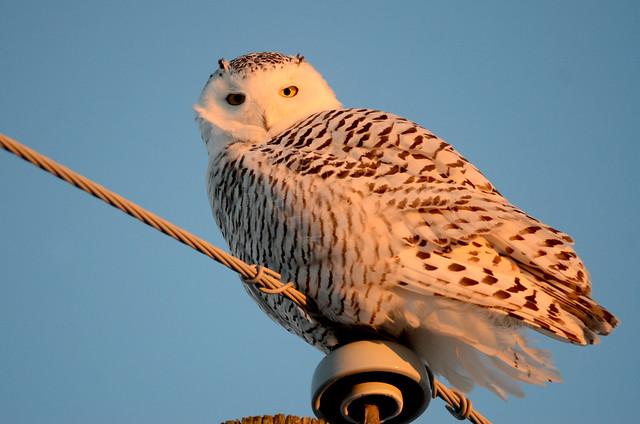
I took a beginner birder/photographer group out to look at Snowy Owls. We got beautiful views of this Snowy Owl in an area where Snowy Owls are baited frequently and habituated to people. It tolerated about a dozen people standing directly below it and talking relatively loudly, and did not flush or show signs of stress and remained on the post after we left. We did not feed the owl, but it was tolerant because it had been habituated. My clients were happy with their views and photos and I did not flush or otherwise harass any Snowy Owls, visit or divulge the locations of other owls, or trespass onto private property.
A lot of professional
photographers run workshops where they take groups of people out and feed the
owls in order to achieve professional-quality photographs. The most professional and ethical guides do
this on private property, well out into a field, and with lots of clients –
clients that may have otherwise attempted to do the same thing themselves and
harassed many other owls, potentially in dangerous roadside areas or while trespassing. Ethical and professional photography guides have little reason to visit owls outside of their personal regular areas, which reduces pressure on other birds and often draws birds
away from the road into the field used for workshops. I have yet
to find or hear of anyone finding a road-killed Snowy Owl west of Barrie, and
there are lots of owls, lots of people and lots of fast cars.
So far I have argued that feeding birds is not
without consequences, but otherwise is relatively harmless. Unfortunately,
there is a darker side to feeding birds, and this is where most people,
including myself, have a problem with it.
I used to spend a lot of time in the American tropics, and
one of the main subjects for photography there was the abundance of
hummingbirds. Hummingbirds are not easy to photograph, so I wondered what these
hummingbird workshops consisted of, and I was not impressed.
A multi-flash setup used for photographing hummingbirds I saw in Ecuador.
A hummingbird feeder is placed in the centre of a ring of
multiple external flashes to illuminate the birds from every angle. All of the
other hummingbird feeders are taken down, forcing dozens of birds normally
spread between several feeders to resort to the one used by the workshop. Then,
all of the holes on the feeder are plugged except one, which gave a profile
view of the hummingbird coming to the feeder.
The birds were visibly stressed, with many birds attempting to feed from the
single feeder port at the same time. Hummingbirds are extremely aggressive, and
this resulted in serious fights that would often end up on the ground. A single
bird (usually a big species like a violetear or Rufous-tailed) would dominate
the feeder and exhaust itself attempting to chase away all the rivals – all the
while being constantly battered with flash. It was not a pretty scene and
caused obvious visible stress in the birds for the duration of the time - heavy breathing, lethargy, and lengthy aggressive physical contact. Since
hummingbirds have incredibly high metabolisms, suddenly removing a source of
abundant food likely has negative effects. In inclement weather, I imagine
that it could even be fatal. All people who feed hummingbirds wish to obtain pleasure from them, but some people do not care for the welfare of the birds and do it irresponsibly.
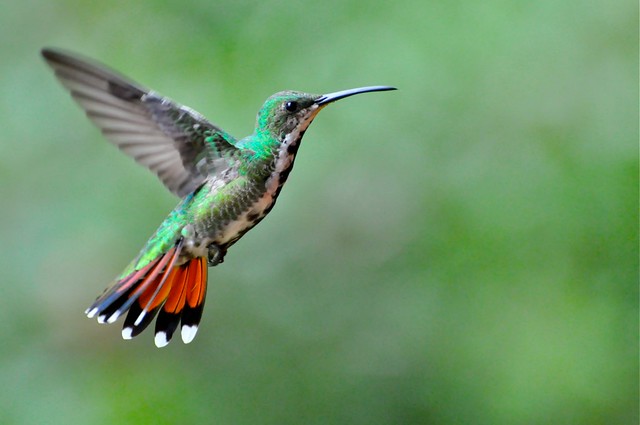
I photographed this Green-breasted Mango coming to a feeder. I got much fewer good photos and photo opportunities than if I were to use a multi-flash setup and take down most of the feeders, but I did not want to disturb the birds and did my best without having to harass them. That being said, the bird was drawn into the area because of the bait (a feeder) and I manipulated myself into the best position to photograph it. In this location hummingbirds would allow themselves to be touched gently while feeding, a product of human habituation.
Another technique popular here in North America works in a
similar fashion, where one would visit an area where birds are accustomed to
bird feeders, remove or cover the feeders and force the birds to favorable
perches for photography. People attempt
this in Algonquin Park (without success) fairly frequently. Many photos of
feeder birds “fighting” or “displaying” that garner so much attention are due to the
birds suddenly forced to compete for a tiny feeder port, when a few minutes ago
they had open access to a variety of feeders. This causes visible stress to
birds – the aggressive behaviors that make for interesting photographs. One can
set up a special photography feeder almost anywhere, but visiting a known
feeding station visited by many birds and suddenly removing the food produces
faster results, and makes for “fighting” shots - to the misfortune of the local
birds.
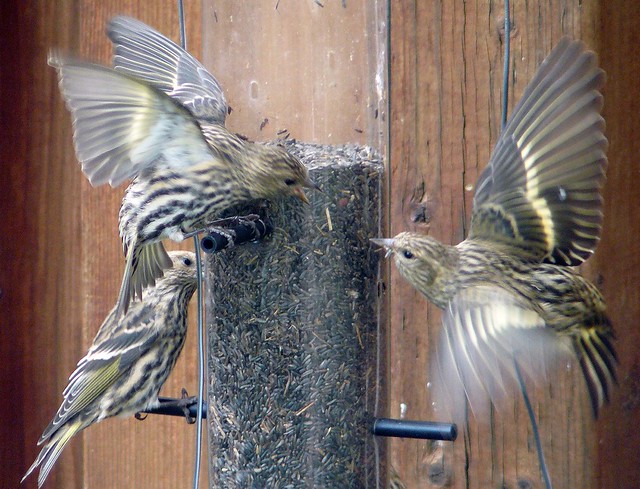
Many birds (such as these Pine Siskins) are already too close for comfort while using a feeder, and some people exploit this fact by making only a small portion of the feeder accessible by removing other feeders or ports, which causes the birds to fight and waste valuable energy while posing for "action" shots.
Feeding live House Mice to raptors comes with its own problems. Mice aren’t cheap, and many people don't wish to sacrifice a
living animal to get photographs of another. The result is some people
attempting to bait owls without actually giving the birds food, or downright mocking
them with fake mice. I have seen pictures of mice in glass jars being used –
which likely causes a lot of stress for the mouse, and stress and potential
injury for the owl attempting to capture the mouse. Using fake mice causes the
bird to waste energy with multiple passes without gaining any energy itself. If
the bird somehow ingests the fake mouse, that could potentially lead to serious
internal injuries. An owl that is constantly forced to fly without receiving
food loses energy, and similar to the hummingbird example above, if the bird is
actually starving it could theoretically be fatal. It prevents the bird from
moving along to find other prey because a “prey item” is still visible and the
bird will continue to attempt to capture it and lose energy.
Feeding any sort of bird can
be done unethically, in order to exploit the animal while causing it undue
stress – this includes hummingbirds, songbirds, and owls. Owls garner more
attention because they are large, obvious, less common and eat live food – but
there are a variety of ways that feeding birds can harm them and a variety of
people willing to use them because they do not have a concern for their welfare
or don’t know any better.
When judging the ethics of feeding birds, the species isn't as important as the technique, location and level of respect given to the bird.
Another strong point I consider when speaking against raptor
baiting specifically comes from an ethical perspective on the bait itself.
Using sugar water or seeds to bait birds is not the same as using another
living animal.
Mice that are bought in pet stores to bait birds are the
same used for feeding reptiles, so in a way they are similar to the chickens,
cows and other “food” animals – they are produced for consumption. We have
eight snakes at home (all rescues) and they eat these same mice and rats,
albeit most of the time pre-killed and frozen. I personally eat meat, fish, and
hunt.
If I could hunt enough game birds
to replace chicken in my diet, I would, because I know that when I shoot a
grouse it has been living a natural life before it died – I cannot say the same
about factory-farm chickens. Likewise, I have seen my snakes kill live feeder
mice on several occasions, and it is a drawn-out death by constriction. An owl
dispatches a mouse much quicker. Either way, an animal bred for the purpose of
consumption is consumed. There are lots of folks who do not eat meat and do not
believe that animals should be bred for consumption. This is an opinion that I
respect, and in my eyes a very valid reason for being against owl baiting, and is a personal decision.
Pumpkin is a Kenyan Sand Boa. She is a good eater, but some of her friends sometimes refuse to eat unless their prey is alive. Pet snakes like Pumpkin are the main reason feeder mice are readily available and a big business.
A quick note about mammals. Unfortunately, most mammals
cannot fly and so cannot use their environment in the same way that birds can.
While birds are adapted to cope with food shortages by undertaking local or
long-distance movements, mammals don’t have that luxury. In response to
shortages of voles or seeds, birds migrate while mammals starve to death. Starvation
is an important natural control agent. As a result, feeding mammals can be very
detrimental – especially large carnivores such as coyotes and foxes. This can
create an artificial abundance of these predators that will continue to affect
the local ecosystem throughout their artificially long lives, and because they
are higher-level predators, the effects will be more severe. Mammals are more
intelligent than most birds; habituating them to humans can be dangerous to
property or other humans. If suddenly the food source disappears (i.e. house
owners move out), the animal(s) may starve and become aggressive as a result,
and may be destroyed. Mammals can also carry diseases that can be transferred
to humans through close contact. Habituating any sort of mammal, with the possible
exception of rodents, which are lower on the food chain and have normally short
lives regardless, is usually a bad idea.
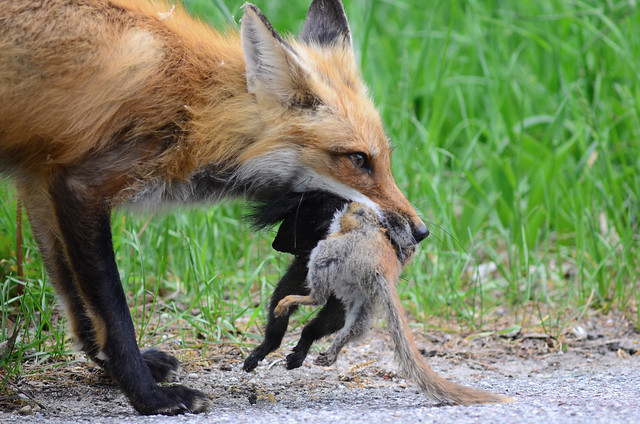 Red Foxes are excellent hunters. Feeding Red Foxes puts a lot of pressure on the area where they live - concentrating them and increasing their survival rate beyond what is normal. While it may seem like we are doing a good deed and helping an animal survive starvation, if that same animal would have naturally starved to death we are altering the ecosystem by keeping it alive - especially if it is an important, high-level predator like a fox that is incapable of leaving an area once food becomes scarce like a bird. Any animal, bird or mammal, continues to have an impact on their environment even if they are being fed by humans, which is one of the strongest points against feeding any sort of wildlife.
Red Foxes are excellent hunters. Feeding Red Foxes puts a lot of pressure on the area where they live - concentrating them and increasing their survival rate beyond what is normal. While it may seem like we are doing a good deed and helping an animal survive starvation, if that same animal would have naturally starved to death we are altering the ecosystem by keeping it alive - especially if it is an important, high-level predator like a fox that is incapable of leaving an area once food becomes scarce like a bird. Any animal, bird or mammal, continues to have an impact on their environment even if they are being fed by humans, which is one of the strongest points against feeding any sort of wildlife.
What now? Here are the main points of the mess of words
above:
·
Birds do not require humans to feed them.
·
Feeding birds is purely for personal gain.
·
Feeding birds can kill birds by exposing them to
disease and predators.
·
Feeding birds likely does not impact bird
populations.
·
Feeding birds likely impacts the local
ecosystem.
·
Feeding birds causes them to become
human-habituated.
·
Habituated birds can be at a higher level of
risk from human-related threats such as roads.
·
Habituated birds draw human pressure away from birds
of the same species elsewhere.
·
Habituated birds remain capable
of natural behavior such as hunting and migration.
·
There are methods of feeding birds that cause obvious
visible stress to birds.
·
There are people who feed birds irresponsibly
without concern for their welfare.
·
There are people who feed birds responsibly and
care for their welfare.
·
Feeding live animals to birds may be seen as
unethical or immoral.
·
Feeding mammals is different from feeding birds
due to their ecological differences.
Some of the points I have stated above have support from scientific papers, which I have tried my best to reference in my post. You will see a lot of "likely" and "possibly" in my post as well, because there may not be ample scientific data about whatever I said and I am making an assumption based on what I've seen and read, and I am not afraid to admit that. Largely, this issue is one about personal opinion - at least for now.
A lot of people believe that birds should see as little human interference with their lives as possible. It is a noble concept, but one that I believe is not possible. Birds and people are forced to interact every single day, largely because our incredibly successful species is encroaching on the habitats of the creatures we know and love, many times to their detriment. Birds need all the love that they can get as they are forced closer and closer to humans.
In Europe, most birds are deathly afraid of people. I have never seen a bird in North America react in such a negative way to a human's approach. A Stonechat that I was attempting to photograph in Spain appeared terrified and flew off without stopping at our approach. A buzzard sitting on a post flew off into the distance as our vehicle approached. These are birds that have been persecuted by people for literally hundreds of years - songbirds as food, raptors as pests. They are birds that see a person, and in their brain they associate people directly with death. Our North American birds are much more trusting of people, which warms the heart. A Black-and-white Warbler at Pelee does not fear that it will be mistnetted and its throat slit with shaving razor to become a delicacy in a Cypriot street market. A goshawk in Huntsville does not fear that it will be trapped and bludgeoned to death because it eats grouse. Birds here tend not to associate humans directly with death, but these are real threats birds face in other parts of the world.
Surprisingly, Snowy Owls are one of the most persecuted owls in North America. In British Columbia (Campbell and Preston 2009), 177 Snowy Owl deaths
were separated into 24 categories. Of these, shooting accounted for 25%
of all deaths. A full quarter of the deceased birds were killed by people who wanted them dead.
I think it's fair to say that people do not wish harm upon birds when they are feeding them. There are some people that do not care for the welfare of the birds to obtain personal gain, and use feeding birds to exploit them - baiting owls at a busy road using fake mice, covering bird feeder ports etc. These are the same people that flush roosting owls, play recordings for extended periods of time, and do other activities that have been proven to be detrimental to birds. It is these people, and not the action of feeding the birds, that are the problem.
It is our duty as ethical birders and photographers to continue to learn and educate others about how feeding, watching and photographing birds affects them and their environment. I firmly believe that feeding birds of any species when done correctly is a major benefit to individual birds and bird populations - because it can create voters than will vote against turning bird habitat into parking lots and strip malls.
In Finland, where owl workshops that include baiting are very common, situated in very remote areas and show the utmost respect for the birds, with the tour companies also providing nesting boxes for the owls in question during spring and summer, show that feeding owls can, when done correctly, be very positive for the birds. In many places in Europe, a license is necessary to photograph certain species. Finland's wildlife tourism industry is growing rapidly - and showing that boreal forest are worth more when they are standing rather than when they are toilet paper. This is the exact same habitat that is near and dear to my heart here in Ontario and all of Canada.
I realize that opinions on feeding birds vary greatly. My goal was to provide a research-based personal opinion on the matter. If you disagree, I respect your opinion and our common goal of striving to achieve what is best for our avifauna.
Cheers,
Lev Frid
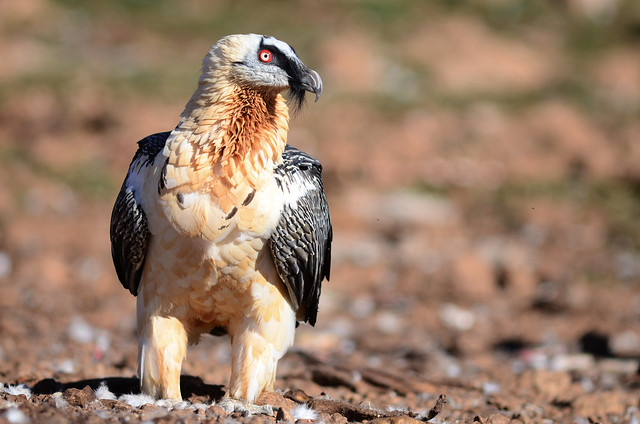
One of the many Lammergeiers that Amanda and I photographed from a hide in an national park in Catalonia, after both obtaining permits from the Spanish government to feed and photograph this incredible bird that was once on the brink of extinction in Europe due to human impact, and now slowly recovering thanks to supplementary feeding and education programs.
